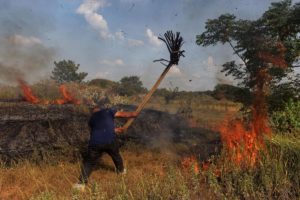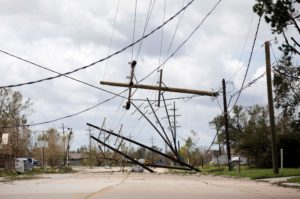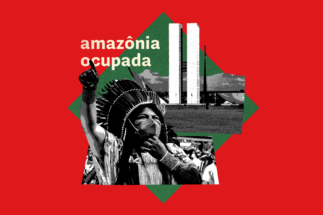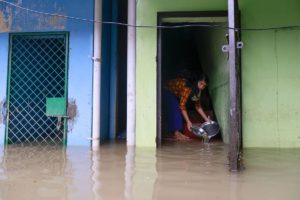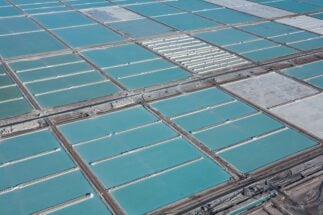In July this year, a wildfire broke out in a forest plantation in northeastern Spain, consuming 14,000 hectares of trees in Bubierca, Aragon. There were many such fires across southern Europe this summer, during the continent’s worst drought for 500 years. But this was not any forest. The trees that burned were part of a reforestation project by a Dutch-based company, Land Life, which was selling the trees’ carbon capture to industrial polluters so they could offset their emissions and comply with European Union climate laws.
The company’s website invites companies to “turn their CO2 into forests”. In this case, these forests have now been turned back into CO2.
Land Life has not yet revealed how much carbon was returned to the atmosphere during the blaze in Bubierca. But it has admitted that the fire was started by a spark from an excavator being used by a local contractor in the plantation nursery. Oops.
The mishap is one of a growing number of wildfires in carbon-offset forests that are calling into question claims that the booming business in so-called “nature-based solutions” can help fight climate change.
Plantations feeling the heat
Offsets of various kinds are a growing element of efforts to curb the build-up of CO2 in the atmosphere. Most major companies that have committed to achieving net-zero emissions have plans to employ them; so do most national governments as part of achieving their nationally determined contributions under the Paris climate agreement.
The majority of offset programmes rely on capture carbon by trees – claiming carbon credits for planting them, protecting those under threat, or managing forests to increase their carbon stores. Concerns about the permanence of these carbon stores are growing as climate change causes droughts and heatwaves that are increasing the annual loss of forests in wildfires.
Some of the worst reverses have been in the fire-prone American West, where many offset forests are situated. In July last year, some 1,600 hectares of offset forest on the Colville Indian Reservation in Washington state went up in flames. It happened days after another fire in southern Oregon ripped through an offset forest containing thousands of tonnes of CO2 that Microsoft had paid to lock up, as part of its effort to achieve net-zero emissions by 2030.
A fire in 2018 at another offset project on Eddie Ranch in northern California burned through 99% of its advertised 280,000 tonnes of credits. Bizarrely, that didn’t stop the sale of most of those credits to the American petroleum refiner PBF Energy from going ahead shortly after the fire.
These offset projects in the American West had all been certified by the California Air Resources Board (CARB), a state agency, for sale to companies in California trying to comply with the state’s CO2 emissions limits. The CARB requires certified projects to hold back some fraction of their carbon credits from sale, putting them into a collective “buffer pool”, as insurance against wildfires and other mishaps. That buffer picked up the tab when the Eddie Ranch credits burned out, for instance.
So far, so good. But an analysis published in August by CarbonPlan, a California-based non-profit database of climate solutions, found that over the past seven years around 6 million tonnes of carbon had been leaked by just six large fires in offset forests certified in the California market, taking up almost the entire wildfire buffer intended to last for a century. Its authors say the buffer is not fit for purpose. And they are not alone.
Growing wildfire risks
The push to stave off warming by planting trees has gained force since the World Economic Forum in 2020 launched a programme to plant a trillion of them. The COP26 climate conference in Glasgow last November saw a flurry of commitments to fund offset forests, and corporations concerned with greening their public images with net-zero commitments are keen to fund them. But there are growing questions about how effective these offsets will prove.
For one thing, they are temporary. While CO2 from burning fossil fuels persists in the air for thousands of years, trees eventually die and return the CO2 they captured. Few offset projects promise their carbon storage will last more than a hundred years, and many offer much less.
Meanwhile, wildfires increasingly threaten even those modest ambitions, says William Anderegg, a forest ecologist at the University of Utah. First, because the fires are made more likely – and more intense – as offset bakers try to increase carbon storage by packing in more trees, turning many forests into tinderboxes. And second, because of the impacts of climate change.
In a study published last December, Anderegg estimated that the risk of fire in any given year was likely to increase fourfold in the US during the 21st century, “compromising forest carbon storage” and raising “serious questions about the integrity of [offset] programmes.” In a subsequent global assessment published this month, he concluded that almost nowhere would be spared by increased wildfires, with large areas of the Amazon and the boreal forest bordering the Arctic from Alaska and Canada to Russia “at particularly high risk in the coming decades.”
Buffers are inadequate
Forest offset companies recognise that not all their forests will thrive. Many certifiers require them to put some of the carbon credits they expect to generate into buffer pools that can be tapped by any certified project that succumbs to fire or other mishaps.
The CARB requires every project to set aside between 2% and 4% of potential credits to ensure specifically against wildfires. But forest scientists have warned that the size of these buffers is often chosen with little scientific rationale, and many are likely to prove woefully inadequate as climate change intensifies.
Forests globally are all at risk with climate changeAnna Trugman, geographer at the University of California Santa Barbara
In the first analysis of its kind, a team of authors led by CarbonPlan ecologist Grayson Badgley has found that CARB’s buffer for wildfires may be all but exhausted already. They estimated that 95% of the buffer set aside for a hundred years of fire risks promised under its certification system, which began in 2015, has been burnt through in the seven years since. The buffer is “severely undercapitalized”, even under current fire regimes, they conclude.
The CARB has responded to the report by saying it uses the best available science to estimate the size of the buffer. And it says that as the number of certified offset projects increases, the size of the buffer will also increase, reducing the risk of it being consumed by future fires.
“That doesn’t make sense to us,” says Danny Cullenward, a lawyer at the American University in Washington DC who is a co-author of the CarbonPlan report. He says a larger project portfolio will also increase the forests at risk of burning. The buffer, their report adds, “makes no effort to account for the all-but-inevitable increase in fire risks as the Earth continues to warm.”
This is not just a problem for American offsets. “Forests globally are all at risk with climate change,” says Anna Trugman, a geographer at the University of California Santa Barbara. Global Forest Watch, an online platform using data gathered by the University of Maryland, reported in August that the worldwide rate of forest burning has almost doubled in the past two decades. And the UN Environment Programme earlier this year predicted a 30% global increase in extreme wildfires by 2050, rising to 50% by the end of the century. The failings in California’s certification exposed by CarbonPlan are likely to be replicated globally, says Cullenward. The voluntary offset industry, with its hundreds of markets and certifiers of corporate offsets, “has essentially no regulatory requirements and operates instead on loose private standards,” he says. His colleague Freya Chay, programme manager at CarbonPlan, explains that “some buffer pools require no project-level risk assessment”, adding that projects are instead considered according to default factors, “without clear justification for why that is adequate”.
Can fires be mitigated?
What could be done to prevent the carbon offset business from remaining what Cullenward calls a “giant Ponzi scheme”, destined to crash? Better climate-risk science and more rigorous regulation of carbon markets would help, he says. Anderegg agrees. “If forests are tapped to play an important role in climate mitigation, an enormous scientific effort is needed to better shed light on when and where forests will be resilient to climate change in the 21st century,” his new paper concludes.
In the forests themselves, Trugman says that managers could limit understorey growth – the plant life below the forest canopy, which can allow low-intensity fires at ground level to climb to the tree tops, where they become more intense and move faster. Deliberately setting low-intensity ground fires at the start of dry seasons to reduce the dry tinder available later in the season when the risk of big fires is greatest would help. So would grazing animals amid the trees. Where livestock are not available, European foresters have started introducing bison as part of moves to rewild and fireproof their forests.
But ultimately, most forest scientists say the best way to reduce the risk of wildfires in offset forests is to slow climate change itself, by accelerating the decarbonisation of industry and society. There may be no alternative.


